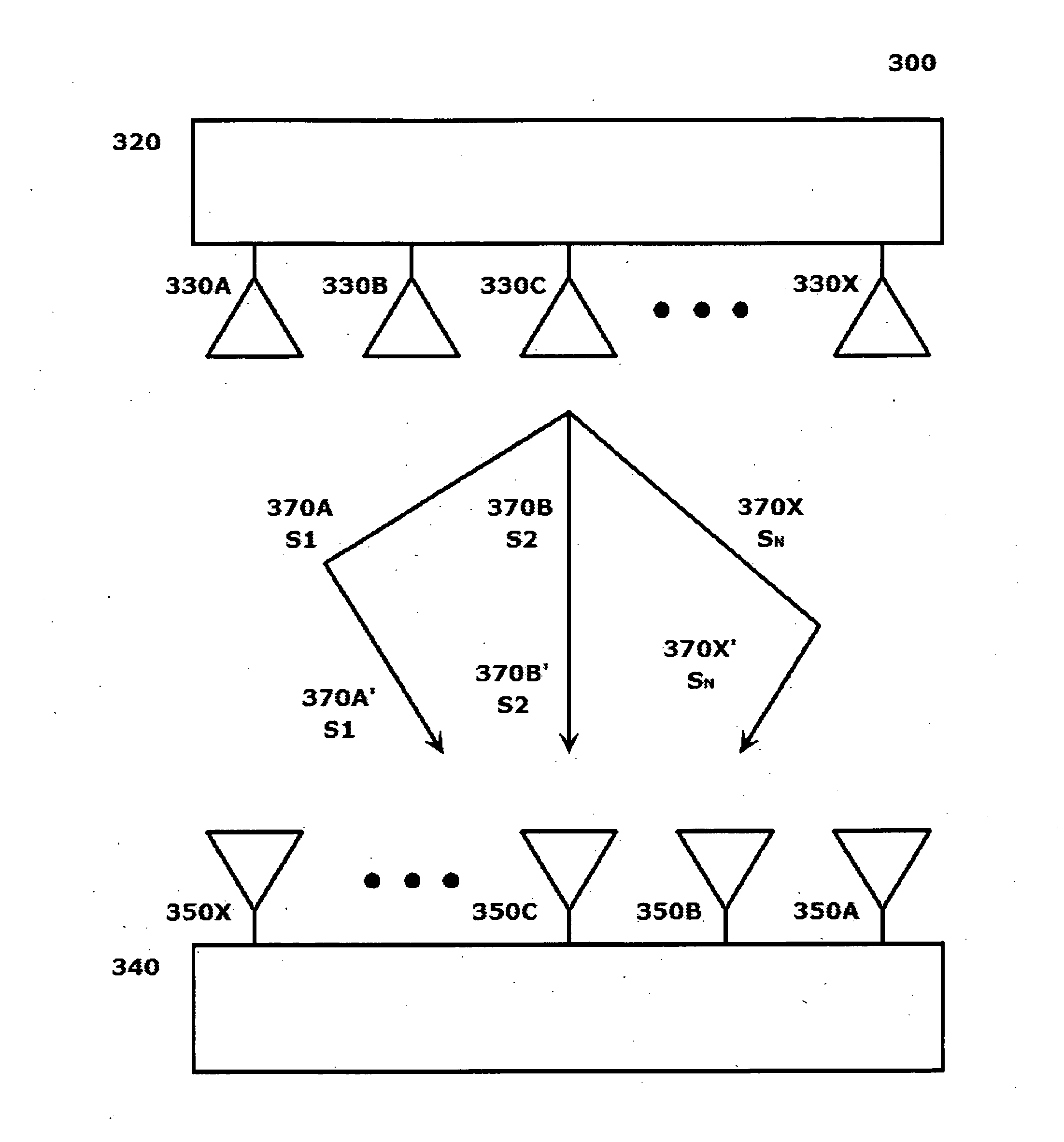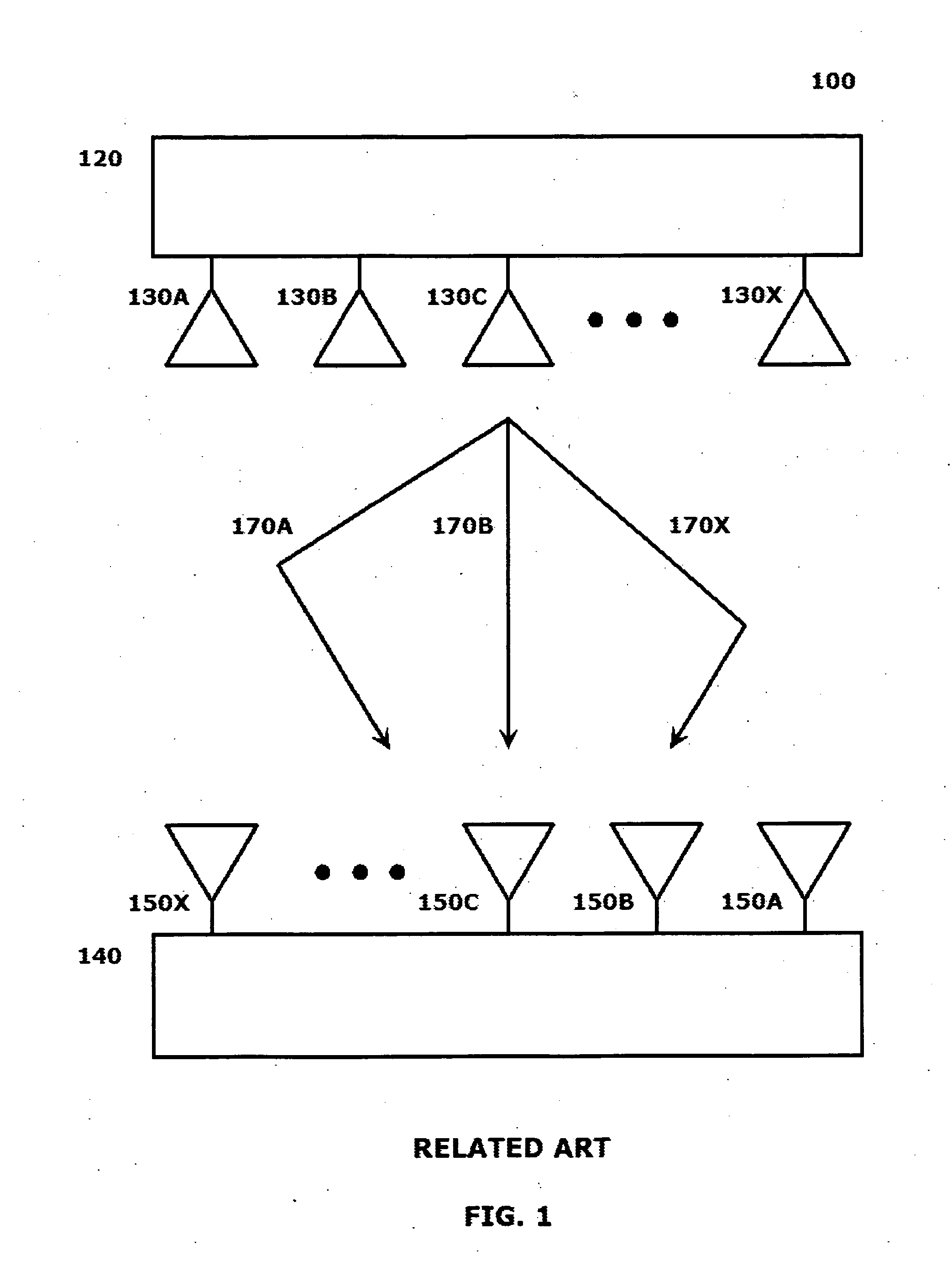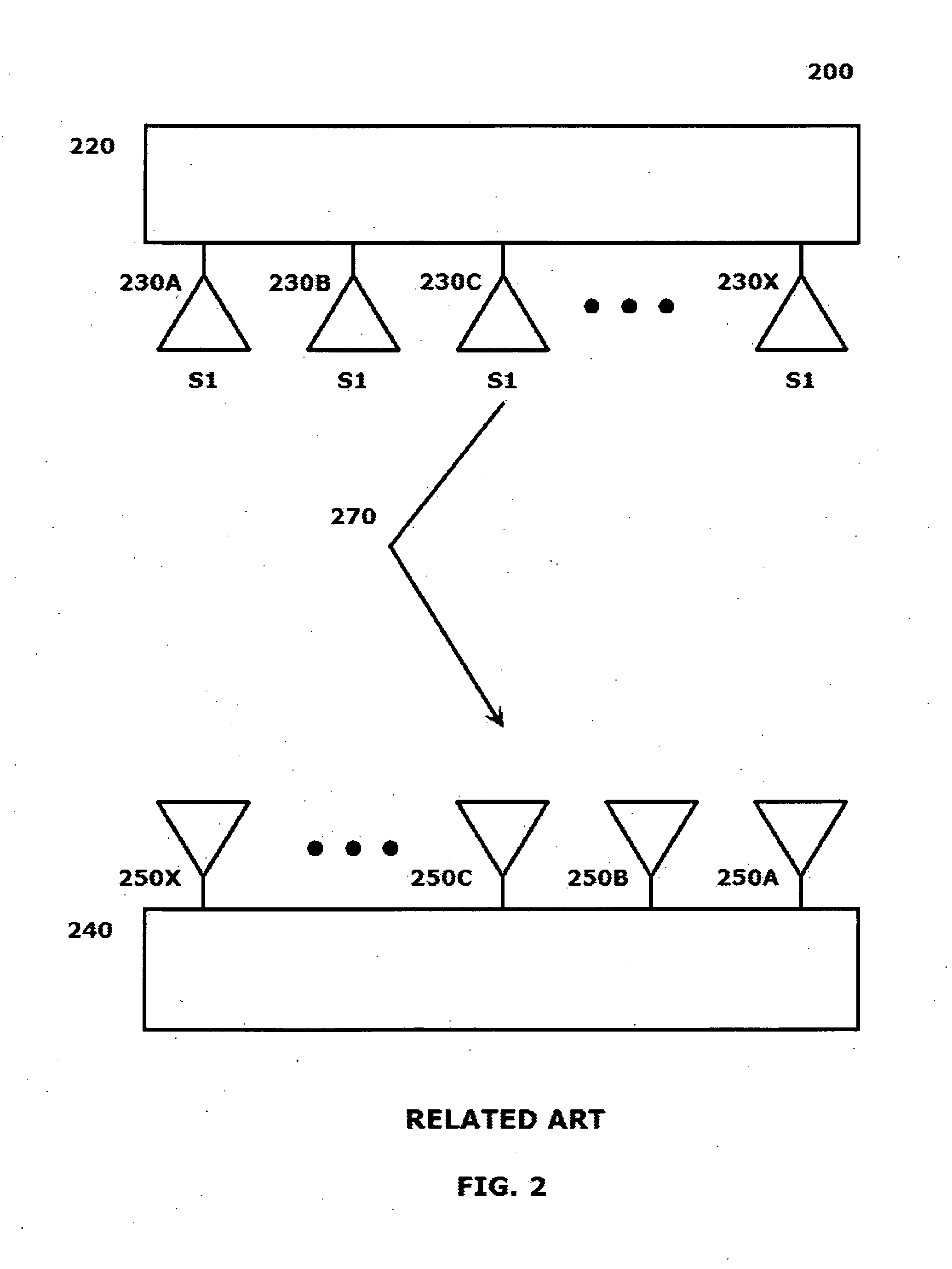Implementing MIMO in mmwave wireless communication systems
a wireless communication system and wireless communication technology, applied in the field of mmwave wireless communication system implementation, can solve the problems of rendering mmwave technology unsuitable for certain wireless applications, and achieve the effects of improving communication performance, improving data throughput, and improving the performance of wireless communication systems
- Summary
- Abstract
- Description
- Claims
- Application Information
AI Technical Summary
Benefits of technology
Problems solved by technology
Method used
Image
Examples
Embodiment Construction
[0002]This disclosure relates to systems and methods for implementing a multiple-input multiple-output (MIMO) scheme in a next generation millimeter wave (mmWave) wireless communication system.
[0003]2. Related Art
[0004]The universe of wireless devices of all types running increasingly sophisticated applications has drastically increased the demand for available bandwidth to pass large amounts of data at a high data rate. This demand is expected to continue to increase. Communications in the mmWave region of the radio-frequency (RF) spectrum have emerged as providing a unique solution to the need for increased bandwidth to support high data rate wireless transmissions. Transmitting, for example, in the mmWave region of the RF spectrum offers extremely high data throughputs as a result of the ultra-wide bandwidth available. What was once considered a tradeoff for this advantage to communications in this region of the RF spectrum, i.e. that mmWave communications are highly directional ...
PUM
 Login to View More
Login to View More Abstract
Description
Claims
Application Information
 Login to View More
Login to View More - R&D
- Intellectual Property
- Life Sciences
- Materials
- Tech Scout
- Unparalleled Data Quality
- Higher Quality Content
- 60% Fewer Hallucinations
Browse by: Latest US Patents, China's latest patents, Technical Efficacy Thesaurus, Application Domain, Technology Topic, Popular Technical Reports.
© 2025 PatSnap. All rights reserved.Legal|Privacy policy|Modern Slavery Act Transparency Statement|Sitemap|About US| Contact US: help@patsnap.com



